The chamois is a small, hoofed animal that looks somewhat like an unusual goat. The chamois favor moderately high elevations of at least 11,800 feet above sea level (3,600 m), which helps the small cloven-hooved animal avoid predators. When threatened, the chamois can easily escape from predators, as it runs at speeds of up to 31 mph (50 kph), and leaps as far as (6 m) horizontally. Read on to learn about the chamois.
Description of the Chamois
The chamois is a small bovid, which means that it has split hooves, and hollow horns. It eats grasses, and is a “ruminant,” which means its stomach is divided into four separate compartments. Ruminants regurgitate their food and chew it again, after which it is processed in a separate stomach compartment. This is called “chewing their cud.”
The chamois looks like a goat-like antelope, its most distinctive characteristic being its white face, with black stripes just below the eyes. The chamois is mostly brown in coloration (which turns light grey in the winter months), but does have a white rump, and a long, black stripe that runs down its back. Both the male and female chamois have horns, which are mostly straight, but hook backwards near the ends. The males, however, do possess thicker horns than the female.
Interesting Facts about the Chamois
The chamois are popular game animals, hunted by humans for their meat and hides. Not only is the meat of the chamois considered a delicacy, but the sport of hunting this unique creature attracts people from around the globe. Hunters even wear the chamois beard as a trophy on the top of their hats in alpine country. This is called a “gamsbart.”
The chamois has a tremendous natural advantage over its predators including:
- Fast Runner – The chamois uses speed to escape from predators, running at a high speed of up to 31 mph (50 kph).
- High Jumper – The chamois can jump 7 feet (2 m) into the air vertically, or over an object horizontally, as far as 20 feet (6 m).
Habitat of the Chamois
The chamois favor moderately high elevations of at least 11,800 feet high (3,600 m), but will come down to elevations of 2,600 feet (800m) during the winter months, in order to find food. These lofty elevations can only be found in mountainous regions of the world, including the Caucasus Mountains in Asia, the mountains of Turkey, the Pyrenees mountains, and Europe. The chamois have adapted to the rocky, rugged terrain of the mountains in order to avoid predators.
Distribution of the Chamois
The chamois are native to mountain regions of Europe, including the Italian Apennines, the Caucasus of Turkey, the Balkans, the Tatra Mountains, the Carpathians, the Pyrenees, and the Alps. The chamois has also been found in parts of South Island, New Zealand.
Diet of the Chamois
The chamois dines on a variety of vegetation, which changes with the seasons. During the summer, the chamois feeds primarily on grasses of the Highlands, and herbs found during the warmer months. As the temperature drops, and the grass is covered by snow, the chamois turn to the needles and bark of the conifer trees. Chamois are active foragers that will continue to graze, or search for food, into the night.
Chamois and Human Interaction
People enjoy hunting chamois for their skins and meat, but also because they are fun to hunt. Chamois hunting is different than hunting other game animals, because they live in high, rocky terrain, which hunters find challenging. To show off their success in previous hunts, hunters will wear the chamois beard in their hats as a trophy. The hide of the chamois is often turned into chamois leather, a smooth, absorbent material that is great for polishing, cleaning, and buffing in the home.
Domestication
Domestication of the chamois is limited to zoos and exotic livestock owners. In general, the chamois is hunted on more occasion than tamed.
Does the Chamois Make a Good Pet
The chamois would not make the best pet, due to the fact that, when this creature becomes alarmed, it flees at high speeds, with tremendous leaps. For this reason, the chamois would be difficult to confine, and could cause injury to humans.
Chamois Care
In zoo captivity, the chamois is given a rocky environment, enclosed with tall fences. They are fed commercial feed pellets and alfalfa hay.
Behavior of the Chamois
Male chamois are solitary in nature, spending the majority of the year alone. In fact, male chamois are forced out of the heard at 3-4 years of age, when they reach sexual maturity. They then live alone until they have reached adulthood at 8-9 years, at which time they go out to establish their own .
Female chamois, however, are completely opposite, as they live with their young in herds of 100 or more chamois for life. Scientists have observed that the female chamois possess a family structure with a sense of compassion. Mother chamois are even known to adopt an orphaned baby if its mother has been killed by a predator.
Reproduction of the Chamois
The mating season for Chamois is late November to early December, or May in New Zealand. It is at this time that the males will fight each other to compete for unmated females. Once pregnant, the female carries her fetus for about 170 days (about 5 1/2 months), before giving birth to a single kid (baby chamois), though chamois can have twins on occasion. The young chamois is weaned (stops drinking the mother’s milk) at 6 months of age, and will grow fully by his first birthday. The growing chamois will not reach sexual maturity, however, until 3-4 years of age.

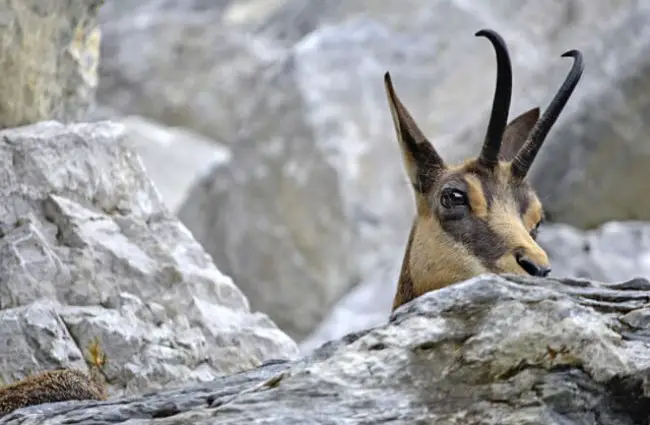

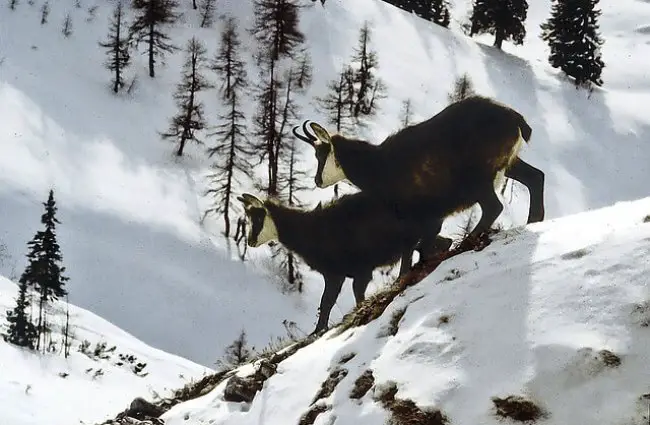

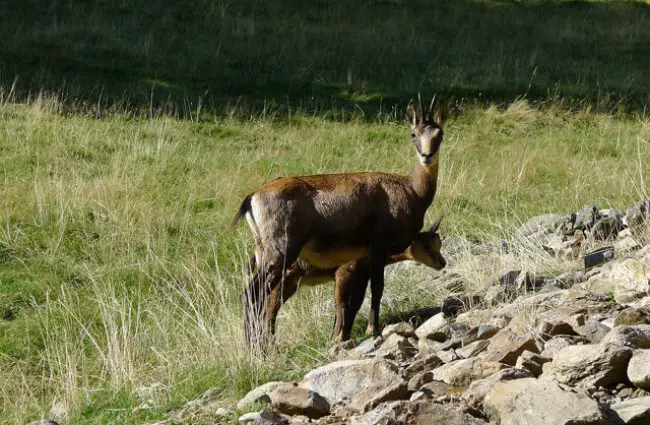
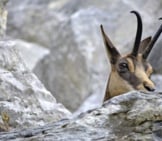


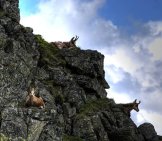
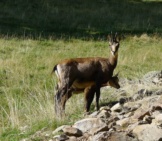
![Red Angus Closeup of a beautiful Red Angus cowPhoto by: U.S. Department of Agriculture [pubic domain]https://creativecommons.org/licenses/by/2.0/](https://animals.net/wp-content/uploads/2020/03/Red-Angus-4-238x178.jpg)












![Red Angus Closeup of a beautiful Red Angus cowPhoto by: U.S. Department of Agriculture [pubic domain]https://creativecommons.org/licenses/by/2.0/](https://animals.net/wp-content/uploads/2020/03/Red-Angus-4-100x75.jpg)

